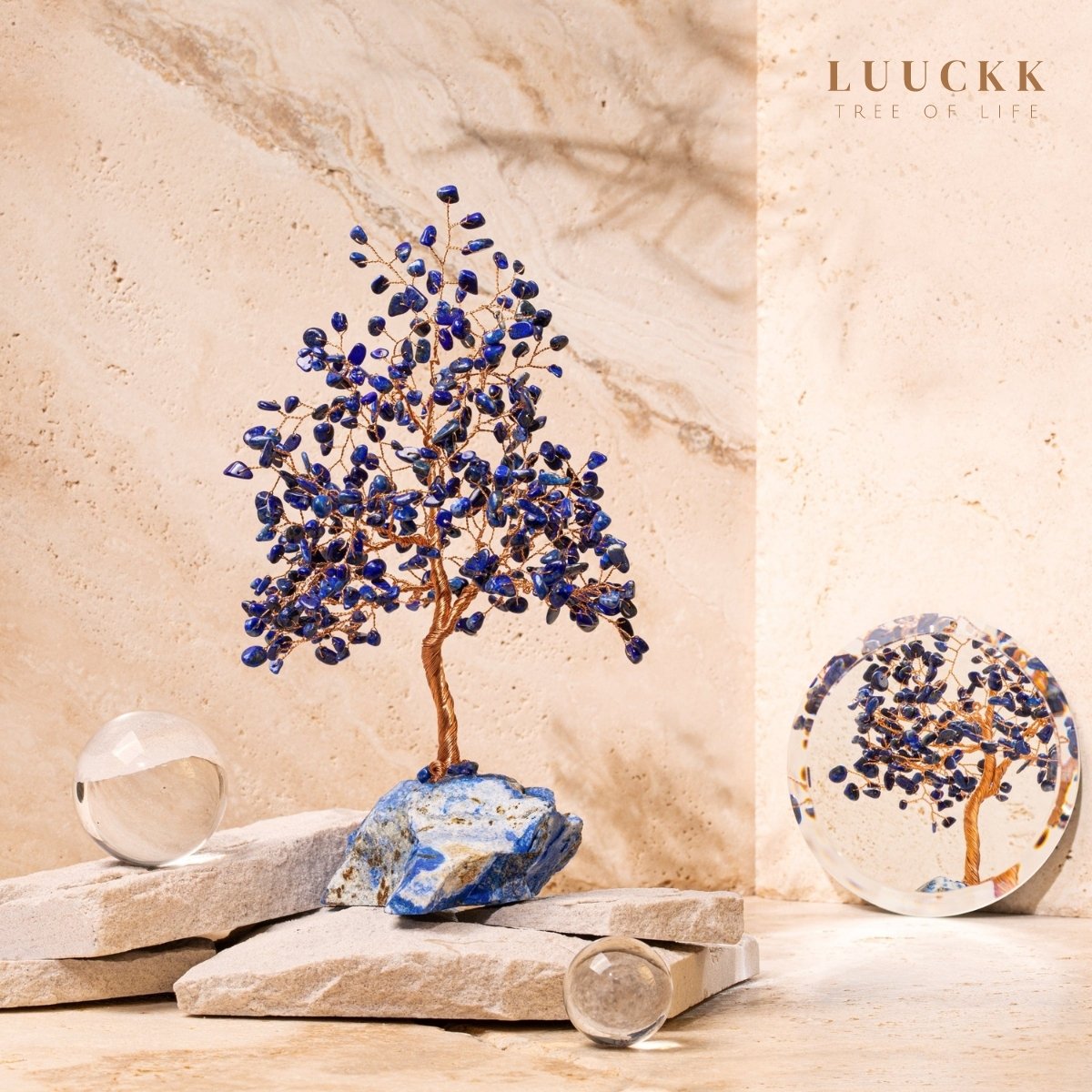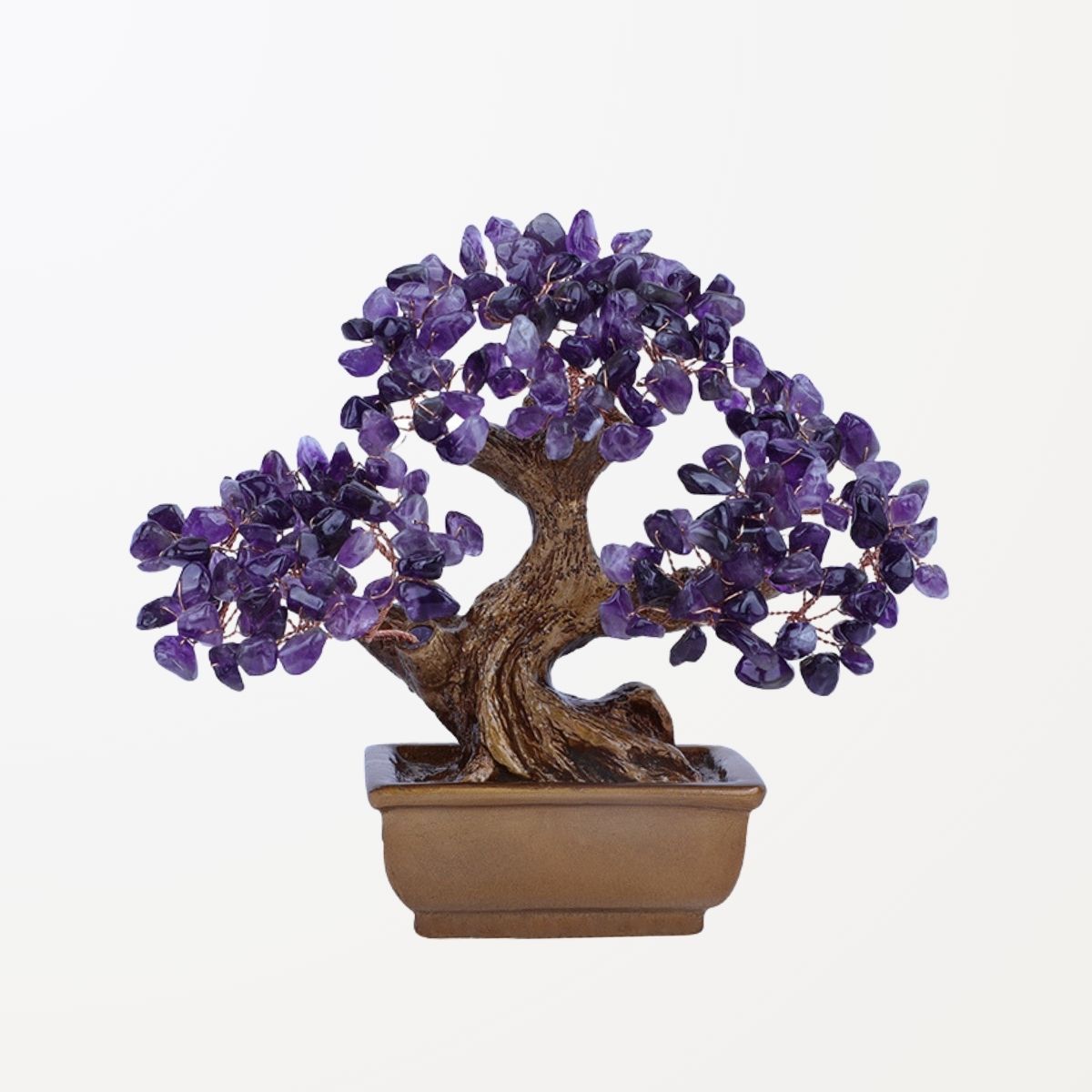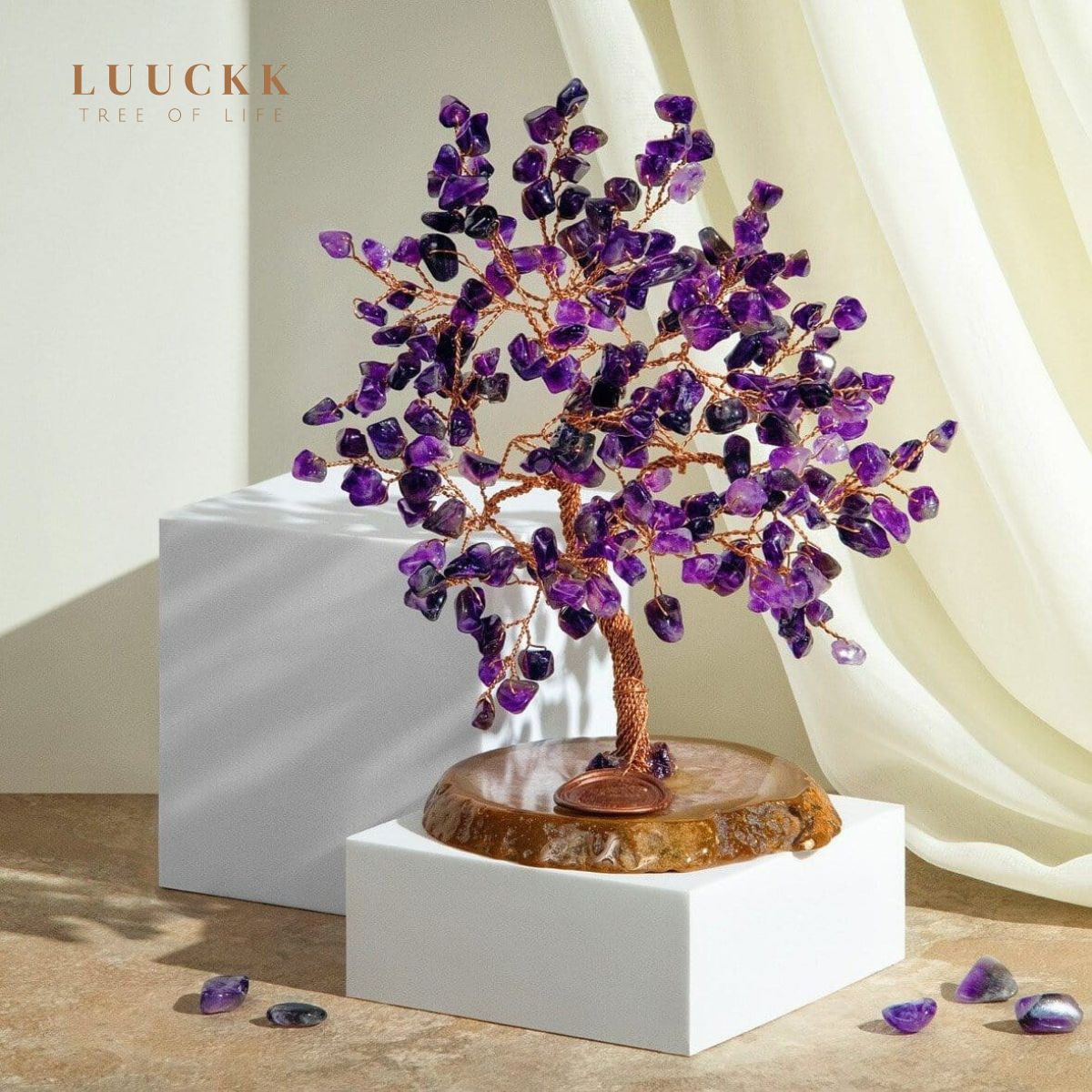
Moonstone Jewelry and Their Symbolism in Different Cultures
Mystical and captivating, the moonstone has fascinated for millennia. Used in jewelry for its ethereal beauty and changing reflections, it is much more than just a gemstone. Rich in symbolism, it transcends eras and cultures, embodying femininity, intuition, and protection. Worn as jewelry, it captivates as much for its aesthetics as for the calming energies it exudes.
Did you know that this stone, so prized today, was already considered sacred in antiquity? Or that it is associated with various rituals and beliefs, ranging from Asia to Native American traditions? This article invites you to dive into the fascinating history and profound meanings of moonstone to better understand why it remains a timeless and spiritually powerful gem.
What is Moonstone?
Moonstone is a variety of feldspar known for its soft and mysterious glow, caused by a phenomenon called adularescence. This pearly shimmer gives the impression that light passes through the stone, creating a unique glow reminiscent of the moon.
Physical Characteristics of Moonstone
- Color: white, bluish, gray, or even peach. Some moonstones, known as "rainbow" moonstones, display multicolored reflections.
- Hardness: 6 to 6.5 on the Mohs scale, making it relatively fragile.
- Geographic origins: Sri Lanka, India, Tanzania, Madagascar, Myanmar.
Moonstone has been used for millennia not only for its beauty but also for its spiritual and energetic properties.
Moonstone Through the Ages: A Fascinating History
Antiquity: Between Deities and Protection
In antiquity, moonstone held a prominent place in the spiritual beliefs of great civilizations. Among the Greeks and Romans, it was considered a magical gem, capable of capturing the moon's rays to channel its divine powers. Associated with Artemis (known as Diana among the Romans), the goddess of the moon and the hunt, it embodied protection, fertility, and maternal instinct.
Women wore it as a talisman to promote conception and ensure smooth pregnancies. It was also used by priests in rituals to invoke the blessing of Artemis or Diana, particularly during full moon nights, considered moments of maximum spiritual power.
In ancient Egypt, moonstone played an equally sacred role. Considered a gift from the gods, it was associated with the goddess Isis, a figure of motherhood, magic, and rebirth. Egyptian priests used this stone during nocturnal ceremonies to connect with lunar energy and invoke divine protection. Egyptian artisans crafted amulets from it, worn by pharaohs and priestesses to guarantee prosperity and wisdom.
Middle Ages: A Prophetic Stone
During the Middle Ages, moonstone continued to fascinate, though with a more mystical approach. It was believed to have divinatory powers, capable of revealing hidden truths or predicting the future. Medieval alchemists, in their quest for esoteric secrets, used it in experiments to explore the mysteries of the universe and attempt contact with spirits.
Moonstone was also prized by travelers and sailors, who considered it a protective stone. They believed it could guide lost souls, repel evil spirits, and ensure a safe return home.
Art Nouveau: A Symbol of Modernity and Poetry
The Art Nouveau period, at the end of the 19th and beginning of the 20th centuries, marked a revival for moonstone. It established itself as a trendy stone, embodying elegance, femininity, and poetry.
Renowned jewelry artists, such as René Lalique and Louis Comfort Tiffany, incorporated moonstone into their creations to harness its soft luminosity and mysterious glow. These pieces, often adorned with nature-inspired motifs such as flowers, butterflies, or dragonflies, perfectly matched the romantic and dreamy aesthetic of the time.
Moonstone then became a symbol of modernity and artistic boldness while preserving its mystical aura. Its changing reflections evoked lunar cycles and added a touch of wonder to each piece, whether necklaces, rings, or brooches.
Over the ages, moonstone has adapted to different eras and cultures while maintaining its power to fascinate. Whether revered as a divine gem, used for mystical practices, or appreciated for its poetic beauty, it embodies a timeless connection between humanity and the mystery of the moon.

The Symbolism of Moonstone in India: Between Spirituality and Femininity
In India, moonstone holds a special place at the crossroads of spirituality and culture. It is closely linked to Chandra, the Hindu god of the moon, embodying gentleness, intuition, and fertility. In Hindu philosophy, Chandra represents the divine feminine energy, called Shakti, and moonstone becomes a tangible manifestation of this energy.
Worn as a talisman, it is said to balance the energies of the body and mind, promoting a state of harmony. It is also believed to calm turbulent emotions and stimulate intuition, making it a valued spiritual tool for sages and meditators.
In daily life, moonstone also plays a central role in social and family traditions. For example, it is often integrated into jewelry given at weddings. These ornaments, considered good luck charms, symbolize love and fertility while ensuring a prosperous union. It is even said to help couples overcome conflicts and strengthen their emotional bond.
Pregnant women, meanwhile, wear moonstone to benefit from its protection and ensure a harmonious pregnancy. It is perceived as an ally that gently accompanies expectant mothers on this emotional and physical journey.
Finally, in Vedic astrology, moonstone is recommended to soothe emotional disturbances caused by lunar phases. Worn as jewelry or in raw stone form, it is said to rebalance lunar energies in the natal chart, promoting mental clarity and inner tranquility.
Thus, in India, moonstone transcends its aesthetic value to become a true spiritual guide, a symbol of sacred femininity, and a living heritage of ancient traditions.

Western Beliefs: Moonstone and Emotions
In the West, moonstone is primarily recognized for its ability to influence the emotional realm. For centuries, it has been associated with protection, intuition, and inner balance.
A Connection with Lunar Cycles
Western cultures have always seen moonstone as a mirror of the lunar cycles. The moon, a universal symbol of change, rebirth, and introspection, is closely linked to human emotions, particularly those of women.
It is believed that moonstone fosters an intuitive connection between the wearer and lunar energies. Often called the "stone of women," it is associated with menstrual cycles. By wearing it, some women believe they can better synchronize their bodies with the phases of the moon, promoting hormonal and emotional balance.
This supposed ability to enhance intuition also makes moonstone a favored companion for artists and creators. It is said to unlock creativity, facilitate inspiration, and help make important decisions, especially during times of doubt or transition.
Applications in Lithotherapy
In lithotherapy, moonstone is prized for its calming and rebalancing properties. It is used to soothe restless minds and help manage excessive emotions. Therapists often recommend this stone to individuals facing stressful situations or periods of change.
- Relieving Anxiety and Stress: Moonstone is seen as a "refuge stone," absorbing tension and promoting a return to a state of inner calm.
- Enhancing Emotional Balance: Thanks to its gentle energy, it helps regulate mood swings and encourages a more serene outlook on situations.
- Encouraging Lucid Dreams and Meditation: Many people place a moonstone under their pillow to stimulate intuitive dreams. In meditation, it is used to activate the crown chakra, enabling a deeper connection with the inner self.
In summary, in modern Western cultures, moonstone is regarded as a powerful emotional tool, offering support to those seeking to rebalance their inner lives and unlock their creative potential.
A Universal Stone: The Symbolism of Moonstone in Other Cultures
Moonstone transcends cultural and geographical boundaries. While each civilization attributes specific meanings to it, it is universally regarded as a spiritual and protective stone.
In Asia
In Asia, moonstone is deeply connected to values of love, purity, and harmony.
- In China: It is often given as a symbol of reconciliation and durability in relationships. Couples in crisis wear it to restore harmony and strengthen their emotional bond. It is also used in spiritual practices to align the energies of the body and mind.
- In Japan: Moonstone is revered for its immaculate glow, seen as a manifestation of purity and renewal. It is used in purification rituals, particularly to mark a fresh start or leave past wounds behind.
Among Native Americans
For indigenous peoples of the Americas, moonstone is intimately linked to nature and its cycles.
Shamans regarded this stone as a powerful tool for interpreting dreams and exploring the spirit world. During ceremonies, they used it to strengthen the connection with the earth, celestial bodies, and unseen forces that influence human life. Moonstone also served as a spiritual guide for women, helping them resonate with the natural rhythms of the world.
In Africa
In Africa, some tribes viewed moonstone as a magical stone, carrying visions and messages.
It was used in spiritual rituals to contact ancestors and access their wisdom. Healers and shamans placed moonstone on the foreheads of initiates to stimulate their clairvoyance and activate their sixth sense. As a meditation tool, it also reinforced the perception of invisible energies and guided collective decisions within the community.
These uses and beliefs demonstrate that, despite cultural diversity, moonstone shares a universal symbolism: a connection to greater natural and spiritual forces. It continues to fascinate with its ability to balance, soothe, and illuminate, regardless of traditions or eras.

Varieties of Moonstone and Their Specific Properties
Not all moonstones are the same. Here is an overview of the main varieties and their properties:
- White Moonstone: Promotes serenity and intuition. Ideal for calming emotions.
- Bluish Moonstone: Known for its radiant reflections, it is used to stimulate creativity.
- Rainbow Moonstone: Brings harmony and balance, helping to clarify situations.
- Peach Moonstone: Energizing, it boosts self-confidence.
How to Care for and Cleanse Your Moonstone Jewelry
To preserve the beauty and energetic properties of your jewelry, proper care is essential.
Physical Cleaning
Use a soft cloth and some lukewarm water to remove impurities. Avoid harsh chemicals that could damage the stone's surface.
Energetic Cleansing
- Water Method: Immerse the stone in clear water for a few hours to eliminate negative energies.
- Moonlight: Expose your jewelry to full moonlight to recharge it energetically.
Precautions
Avoid wearing your moonstone jewelry during physical activities or exposing it to extreme temperatures.
Wearing Moonstone Jewelry Today: Between Elegance and Spirituality
Moonstone jewelry is much more than a simple aesthetic accessory. It combines timeless charm with emotional and spiritual benefits, making it a unique piece that appeals to both fashion enthusiasts and lithotherapy practitioners.
A Timeless Jewel
The soft and mysterious glow of moonstone makes it an ideal choice for contemporary jewelry. Its subtle reflections harmonize beautifully with all styles, whether classic, modern, or bohemian.
- A moonstone ring can add a touch of sophistication and subtlety to everyday wear. Placed on the hand, it catches the light and draws attention without being ostentatious.
- A moonstone pendant, with its delicate glow, pairs perfectly with evening attire or layered necklaces. It serves as a central piece that adds an elegant and spiritual note to any look.
- Moonstone earrings are ideal for brightening the face with their iridescent reflections. They are particularly suited to minimalist or romantic styles.
- Bracelets and cuffs adorned with moonstones offer a boho-chic look, perfect for lovers of nature-inspired jewelry.
What makes moonstone unique is its versatility: it suits all ages, all skin tones, and all occasions—from understated office wear to elegant ceremonies.
Emotional and Spiritual Benefits
Beyond its beauty, wearing moonstone jewelry surrounds you with nurturing energy. Moonstone is renowned for being a valuable ally in managing emotions and maintaining inner balance.
- Stress Relief: When worn as jewelry, moonstone acts as an energetic refuge, absorbing emotional tensions. It is particularly recommended for those facing periods of change or emotional challenges.
- Inner Harmony: By connecting with lunar cycles, moonstone helps restore balance between the mind and the heart. It is ideal for those seeking to regulate fluctuating emotions or strengthen their mental stability.
- Enhancing Intuition: Many believe that moonstone amplifies intuition and creativity. Wearing a moonstone piece, such as a necklace close to the heart chakra or a ring, is said to open the mind to new ideas and a deeper self-understanding.
- Energetic Protection: In spiritual beliefs, moonstone also serves as a shield against negative energies. Worn as a pendant or bracelet, it creates a protective barrier to maintain a pure energetic field around the wearer.
These properties explain why moonstone jewelry is not just considered an ornament but also a spiritual companion in daily life.
A Trend That Captivates All Generations
More and more people today choose moonstone jewelry for its benefits and its aesthetic appeal. It fits perfectly into current trends that value jewelry made from natural materials with profound meaning.
Wearing moonstone jewelry is thus a way to combine timeless beauty with a deeper sense. It is a subtle means of connecting with oneself while presenting an elegant and sophisticated style. Whether you seek to calm your mind or simply complete your outfit, moonstone is the perfect choice to brighten your day.
Conclusion
Over the centuries, moonstone has transcended geographical and cultural boundaries to establish itself as a universal stone rich in symbolism. From antiquity to the present day, it has accompanied humanity in its beliefs, rituals, and quests for beauty.
Wearing moonstone jewelry is much more than an aesthetic choice: it is an intimate connection with the cycles of the moon, a calming energy, and a touch of timeless elegance. Whether you are drawn to its emotional benefits or simply its unique beauty, moonstone remains a precious ally to illuminate your daily life.
So why not succumb to its charm and let its mystical reflections enrich your life?
FAQ: All About Moonstone Jewelry
1. What is moonstone?
Moonstone is a natural gemstone belonging to the feldspar family. It is famous for its unique glow called adularescence, reminiscent of moonlight.
2. What are the benefits of moonstone?
It is known for relieving stress, balancing emotions, enhancing intuition, and stimulating creativity.
3. Why is moonstone called the "stone of women"?
It is associated with menstrual cycles, fertility, and feminine energy, symbolizing gentleness and intuition.
4. How is moonstone used in lithotherapy?
It can be worn as jewelry to benefit from its effects daily or placed under a pillow to promote dreams and restful sleep.
5. Does moonstone suit every style?
Yes, its soft glow and subtle reflections adapt to both modern and classic or bohemian looks.
6. Where does moonstone come from?
The main sources of moonstone are Sri Lanka, India, Madagascar, and Tanzania.
7. How do I care for my moonstone jewelry?
Clean it gently with a soft cloth and lukewarm water. Avoid chemicals and impacts.
8. Is moonstone a good gift?
Absolutely! It is perfect for those seeking both elegance and spiritual symbolism.
9. Can moonstone be combined with other stones?
Yes, it pairs beautifully with rose quartz, amethyst, or labradorite for complementary energetic effects.
10. Why choose moonstone jewelry?
Because it combines timeless beauty, soothing energy, and a fascinating history that spans the ages.
Suggested Products
Best products



































